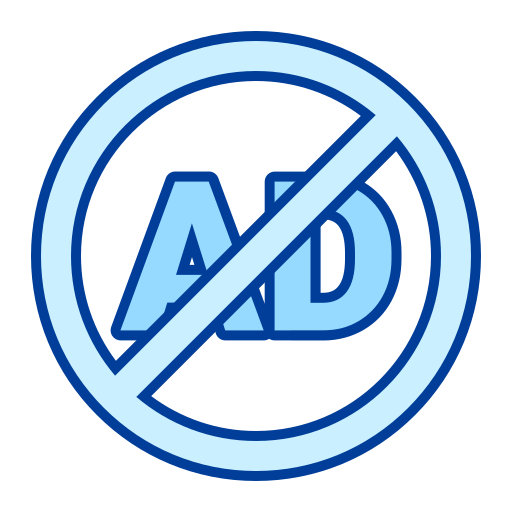Creating an effective navigation bar is crucial for any website’s user experience. Bootstrap’s navbar component provides a flexible, responsive solution that works across all devices. This comprehensive guide will walk you through everything you need to know about creating and customizing Bootstrap navbars, from basic implementation to advanced techniques.
What is a Bootstrap Navbar?
A Bootstrap navbar is a responsive navigation header that collapses on smaller screens and expands on larger ones. It’s one of Bootstrap’s most popular components because it handles the complex responsive behavior automatically while providing extensive customization options.
The navbar typically contains your site’s branding, primary navigation links, and often includes features like search forms, buttons, or dropdown menus. Bootstrap’s implementation ensures your navigation works seamlessly across desktop, tablet, and mobile devices.
Prerequisites and Setup
Before creating your navbar, ensure you have Bootstrap properly included in your project. You’ll need both the CSS and JavaScript files for full navbar functionality.
CDN Method (Quickest Start)
<!DOCTYPE html>
<html lang="en">
<head>
<meta charset="UTF-8">
<meta name="viewport" content="width=device-width, initial-scale=1.0">
<title>Bootstrap Navbar Example</title>
<!-- Bootstrap CSS -->
<link href="https://cdn.jsdelivr.net/npm/[email protected]/dist/css/bootstrap.min.css" rel="stylesheet">
</head>
<body>
<!-- Your navbar will go here -->
<!-- Bootstrap JavaScript -->
<script src="https://cdn.jsdelivr.net/npm/[email protected]/dist/js/bootstrap.bundle.min.js"></script>
</body>
</html>
The viewport meta tag is essential for responsive behavior, and the JavaScript bundle is required for the collapsible mobile menu functionality.
Basic Navbar Structure
Let’s start with a fundamental navbar that includes branding and navigation links:
<nav class="navbar navbar-expand-lg navbar-light bg-light">
<div class="container-fluid">
<!-- Brand/Logo -->
<a class="navbar-brand" href="#">Your Brand</a>
<!-- Mobile toggle button -->
<button class="navbar-toggler" type="button" data-bs-toggle="collapse" data-bs-target="#navbarNav">
<span class="navbar-toggler-icon"></span>
</button>
<!-- Collapsible navbar content -->
<div class="collapse navbar-collapse" id="navbarNav">
<ul class="navbar-nav">
<li class="nav-item">
<a class="nav-link active" href="#">Home</a>
</li>
<li class="nav-item">
<a class="nav-link" href="#">About</a>
</li>
<li class="nav-item">
<a class="nav-link" href="#">Services</a>
</li>
<li class="nav-item">
<a class="nav-link" href="#">Contact</a>
</li>
</ul>
</div>
</div>
</nav>
Understanding the Key Classes
navbar: The main container class that establishes the navigation bar navbar-expand-lg: Controls when the navbar expands from collapsed state (options: sm, md, lg, xl, xxl) navbar-light/navbar-dark: Sets the color scheme for text and toggle button bg-light: Background color utility class container-fluid: Provides full-width container with padding navbar-toggler: The hamburger menu button for mobile devices navbar-collapse: The collapsible content area navbar-nav: Container for navigation links nav-item and nav-link: Individual navigation items and links
Adding Dropdown Menus
Dropdown menus enhance navigation by organizing related links under main categories:
<nav class="navbar navbar-expand-lg navbar-dark bg-dark">
<div class="container-fluid">
<a class="navbar-brand" href="#">TechSite</a>
<button class="navbar-toggler" type="button" data-bs-toggle="collapse" data-bs-target="#navbarDropdown">
<span class="navbar-toggler-icon"></span>
</button>
<div class="collapse navbar-collapse" id="navbarDropdown">
<ul class="navbar-nav me-auto">
<li class="nav-item">
<a class="nav-link active" href="#">Home</a>
</li>
<li class="nav-item dropdown">
<a class="nav-link dropdown-toggle" href="#" role="button" data-bs-toggle="dropdown">
Services
</a>
<ul class="dropdown-menu">
<li><a class="dropdown-item" href="#">Web Development</a></li>
<li><a class="dropdown-item" href="#">Mobile Apps</a></li>
<li><hr class="dropdown-divider"></li>
<li><a class="dropdown-item" href="#">Consulting</a></li>
</ul>
</li>
<li class="nav-item">
<a class="nav-link" href="#">About</a>
</li>
</ul>
</div>
</div>
</nav>
The dropdown class on the nav-item, dropdown-toggle on the link, and dropdown-menu container work together to create the dropdown functionality. The dropdown-divider class adds visual separation between menu sections.
Responsive Breakpoints and Behavior
Bootstrap navbars use specific breakpoint classes to control when they collapse:
- navbar-expand: Never collapses
- navbar-expand-sm: Collapses below 576px
- navbar-expand-md: Collapses below 768px
- navbar-expand-lg: Collapses below 992px (most common)
- navbar-expand-xl: Collapses below 1200px
- navbar-expand-xxl: Collapses below 1400px
Choose the breakpoint that best fits your design and content needs. The lg breakpoint works well for most websites as it provides adequate space for navigation items on tablets and desktops while collapsing on mobile devices.
Advanced Navbar Features
Adding Forms and Search
Including forms in your navbar is common for search functionality:
<nav class="navbar navbar-expand-lg navbar-light bg-light">
<div class="container-fluid">
<a class="navbar-brand" href="#">Brand</a>
<div class="collapse navbar-collapse">
<ul class="navbar-nav me-auto">
<li class="nav-item">
<a class="nav-link" href="#">Home</a>
</li>
<li class="nav-item">
<a class="nav-link" href="#">Products</a>
</li>
</ul>
<!-- Search form -->
<form class="d-flex" role="search">
<input class="form-control me-2" type="search" placeholder="Search" aria-label="Search">
<button class="btn btn-outline-success" type="submit">Search</button>
</form>
</div>
</div>
</nav>
Navbar with Buttons
Buttons can be integrated for calls-to-action or user authentication:
<nav class="navbar navbar-expand-lg navbar-light bg-light">
<div class="container-fluid">
<a class="navbar-brand" href="#">Brand</a>
<div class="collapse navbar-collapse">
<ul class="navbar-nav me-auto">
<li class="nav-item">
<a class="nav-link" href="#">Home</a>
</li>
</ul>
<!-- Authentication buttons -->
<div class="d-flex">
<button class="btn btn-outline-primary me-2" type="button">Login</button>
<button class="btn btn-primary" type="button">Sign Up</button>
</div>
</div>
</div>
</nav>
Positioning and Fixed Navbars
Bootstrap provides utility classes for navbar positioning:
Fixed Top Navbar
<nav class="navbar navbar-expand-lg navbar-dark bg-dark fixed-top">
<!-- navbar content -->
</nav>
Important: When using fixed-top, add padding to your body element to prevent content from being hidden behind the navbar:
body {
padding-top: 56px; /* Adjust based on your navbar height */
}
Fixed Bottom Navbar
<nav class="navbar navbar-expand-lg navbar-light bg-light fixed-bottom">
<!-- navbar content -->
</nav>
Sticky Top Navbar
<nav class="navbar navbar-expand-lg navbar-light bg-light sticky-top">
<!-- navbar content -->
</nav>
The sticky-top navbar scrolls with the page until it reaches the top, then remains fixed.
Customizing Navbar Appearance
Color Schemes
Bootstrap provides built-in color schemes:
<!-- Light navbar -->
<nav class="navbar navbar-expand-lg navbar-light bg-light">
<!-- Dark navbar -->
<nav class="navbar navbar-expand-lg navbar-dark bg-dark">
<!-- Primary color navbar -->
<nav class="navbar navbar-expand-lg navbar-dark bg-primary">
<!-- Custom color navbar -->
<nav class="navbar navbar-expand-lg navbar-light" style="background-color: #e3f2fd;">
Custom CSS Styling
For more advanced customization, you can override Bootstrap’s default styles:
/* Custom navbar styling */
.custom-navbar {
box-shadow: 0 2px 4px rgba(0,0,0,.1);
transition: background-color 0.3s ease;
}
.custom-navbar .navbar-brand {
font-weight: bold;
font-size: 1.5rem;
}
.custom-navbar .nav-link {
font-weight: 500;
transition: color 0.3s ease;
}
.custom-navbar .nav-link:hover {
color: #007bff !important;
}
/* Active link styling */
.custom-navbar .nav-link.active {
color: #007bff !important;
border-bottom: 2px solid #007bff;
}
Common Issues and Solutions
Mobile Menu Not Working
If your mobile toggle button isn’t working, ensure you’ve included Bootstrap’s JavaScript and that your data-bs-target matches your collapse div’s id:
<!-- Button target must match collapse ID -->
<button data-bs-target="#navbarContent">
<div class="collapse navbar-collapse" id="navbarContent">
Navbar Items Not Aligning Properly
Use Bootstrap’s flexbox utilities to control alignment:
<div class="collapse navbar-collapse">
<!-- Left-aligned items -->
<ul class="navbar-nav me-auto">
<!-- nav items -->
</ul>
<!-- Right-aligned items -->
<ul class="navbar-nav">
<!-- nav items -->
</ul>
</div>
Dropdown Menus Getting Cut Off
If dropdown menus are being clipped by parent containers, ensure proper z-index and overflow settings:
.navbar .dropdown-menu {
z-index: 1050;
}
Accessibility Best Practices
Creating accessible navbars is crucial for users with disabilities:
Proper ARIA Labels
<nav class="navbar navbar-expand-lg" aria-label="Main navigation">
<button class="navbar-toggler"
aria-controls="navbarContent"
aria-expanded="false"
aria-label="Toggle navigation">
<span class="navbar-toggler-icon"></span>
</button>
</nav>
Keyboard Navigation
Ensure all interactive elements are keyboard accessible and include proper focus indicators:
.navbar .nav-link:focus,
.navbar .navbar-toggler:focus {
outline: 2px solid #007bff;
outline-offset: 2px;
}
Screen Reader Support
Use semantic HTML and appropriate ARIA attributes:
<ul class="navbar-nav" role="menubar">
<li class="nav-item" role="none">
<a class="nav-link" href="#" role="menuitem">Home</a>
</li>
</ul>
Performance Considerations
Minimize Custom CSS
While customization is important, excessive custom CSS can impact performance. Use Bootstrap’s utility classes when possible:
<!-- Instead of custom CSS -->
<nav class="navbar navbar-expand-lg navbar-light bg-light shadow-sm">
Optimize Images in Brand
If using images in your navbar brand, optimize them for web:
<a class="navbar-brand" href="#">
<img src="logo-optimized.webp" alt="Company Logo" height="30" loading="lazy">
</a>
Testing Your Navbar
Cross-Browser Testing
Test your navbar across different browsers and devices. Pay special attention to:
- Mobile menu functionality on iOS Safari and Android Chrome
- Dropdown behavior on touch devices
- Keyboard navigation in all browsers
- Screen reader compatibility
Responsive Testing
Use browser developer tools to test various screen sizes:
- Test the collapse breakpoint behavior
- Verify mobile menu opens and closes properly
- Check that all content remains accessible on small screens
- Ensure touch targets are adequately sized (minimum 44px)
Real-World Example: Complete E-commerce Navbar
Here’s a comprehensive example that combines many of the techniques discussed:
<nav class="navbar navbar-expand-lg navbar-light bg-white shadow-sm sticky-top">
<div class="container">
<!-- Brand with logo -->
<a class="navbar-brand d-flex align-items-center" href="#">
<img src="logo.svg" alt="ShopName" height="32" class="me-2">
<span class="fw-bold">ShopName</span>
</a>
<!-- Mobile toggle -->
<button class="navbar-toggler" type="button"
data-bs-toggle="collapse" data-bs-target="#mainNavbar"
aria-controls="mainNavbar" aria-expanded="false"
aria-label="Toggle navigation">
<span class="navbar-toggler-icon"></span>
</button>
<!-- Main navbar content -->
<div class="collapse navbar-collapse" id="mainNavbar">
<!-- Primary navigation -->
<ul class="navbar-nav me-auto mb-2 mb-lg-0">
<li class="nav-item">
<a class="nav-link active" href="#">Home</a>
</li>
<li class="nav-item dropdown">
<a class="nav-link dropdown-toggle" href="#" role="button"
data-bs-toggle="dropdown" aria-expanded="false">
Categories
</a>
<ul class="dropdown-menu">
<li><a class="dropdown-item" href="#">Electronics</a></li>
<li><a class="dropdown-item" href="#">Clothing</a></li>
<li><a class="dropdown-item" href="#">Home & Garden</a></li>
<li><hr class="dropdown-divider"></li>
<li><a class="dropdown-item" href="#">Sale Items</a></li>
</ul>
</li>
<li class="nav-item">
<a class="nav-link" href="#">About</a>
</li>
<li class="nav-item">
<a class="nav-link" href="#">Contact</a>
</li>
</ul>
<!-- Search form -->
<form class="d-flex me-3" role="search">
<div class="input-group">
<input class="form-control" type="search"
placeholder="Search products..." aria-label="Search">
<button class="btn btn-outline-secondary" type="submit">
<i class="fas fa-search"></i>
</button>
</div>
</form>
<!-- User actions -->
<div class="d-flex align-items-center">
<a href="#" class="btn btn-link text-decoration-none me-2">
<i class="fas fa-heart"></i>
<span class="d-none d-md-inline ms-1">Wishlist</span>
</a>
<a href="#" class="btn btn-link text-decoration-none me-2 position-relative">
<i class="fas fa-shopping-cart"></i>
<span class="d-none d-md-inline ms-1">Cart</span>
<span class="position-absolute top-0 start-100 translate-middle badge rounded-pill bg-danger">
3
</span>
</a>
<div class="dropdown">
<button class="btn btn-link dropdown-toggle text-decoration-none"
data-bs-toggle="dropdown">
<i class="fas fa-user"></i>
<span class="d-none d-md-inline ms-1">Account</span>
</button>
<ul class="dropdown-menu dropdown-menu-end">
<li><a class="dropdown-item" href="#">Profile</a></li>
<li><a class="dropdown-item" href="#">Orders</a></li>
<li><a class="dropdown-item" href="#">Settings</a></li>
<li><hr class="dropdown-divider"></li>
<li><a class="dropdown-item" href="#">Logout</a></li>
</ul>
</div>
</div>
</div>
</div>
</nav>
Conclusion
Bootstrap navbars provide a robust foundation for website navigation that adapts seamlessly to different screen sizes and devices. By understanding the core structure, customization options, and best practices outlined in this guide, you can create professional, accessible navigation that enhances your website’s user experience.
Remember to always test your navbar across different devices and browsers, prioritize accessibility, and focus on creating intuitive navigation that helps users accomplish their goals. The examples and techniques covered here should give you the foundation to build navbars that work well for any type of website or application.
Whether you’re building a simple blog, a complex e-commerce site, or a web application, Bootstrap’s navbar component provides the flexibility and reliability you need while handling the complex responsive behavior automatically. Start with the basic examples and gradually incorporate more advanced features as your project requirements grow.




